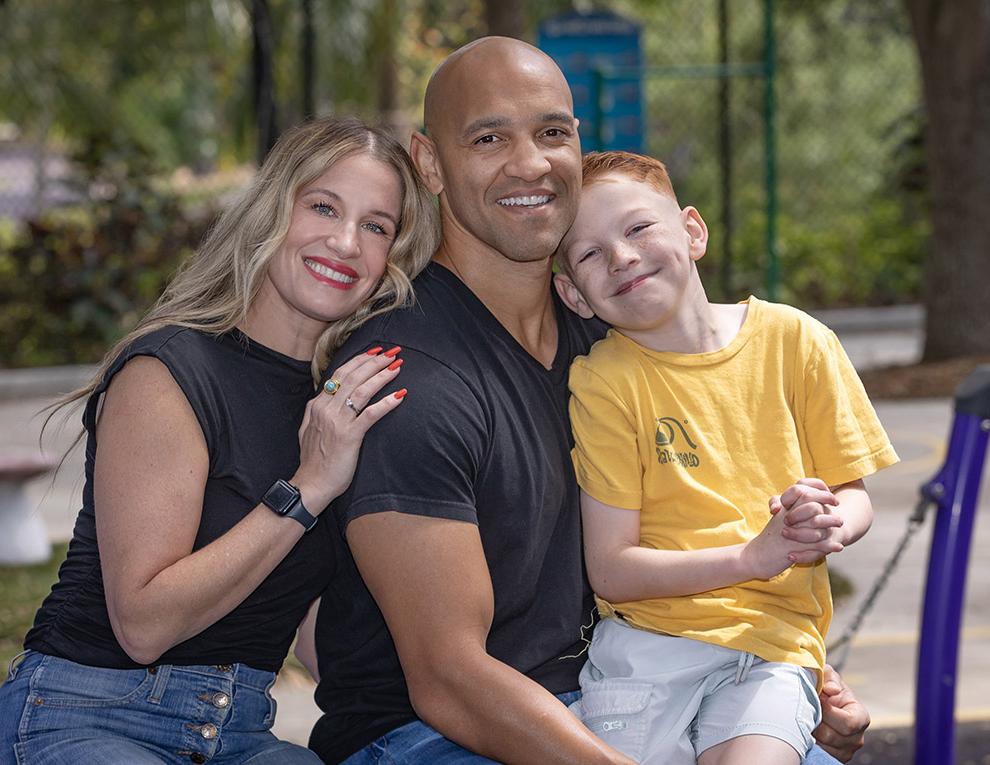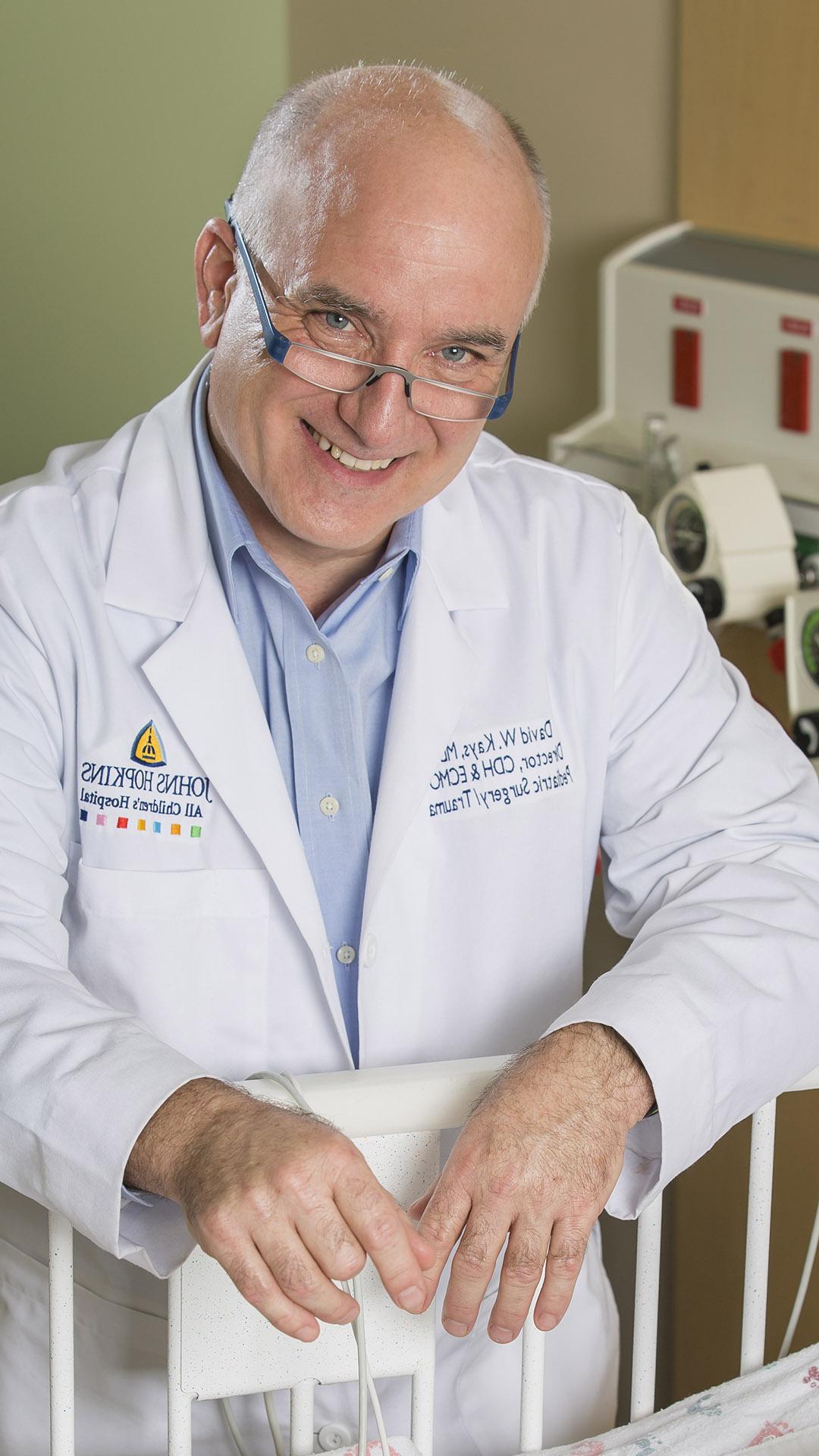Congenital Diaphragmatic Hernia: Julian's Story
A CDH diagnosis brought uncertainty, but seven years later, the outlook is sunny.

 Julian with his mom and dad
Julian with his mom and dadHow to best describe young Julian?
Julian, the 7-year-old with the sun-kissed hair and the perfect sprinkling of freckles across his nose … the high-energy Florida boy who keeps pace with his brothers and sisters at a theme park or anywhere.
Julian, the avid reader … the lover of scooters and swimming and hugs.
“He is the sweetest boy, the most snuggly of all my kids,” says his mom, Morgan.
If Julian’s mom and dad see him as a special gift, it’s partly because his origin story is so extraordinary.
“Thinking back to all he’s been through,” his dad, Dave, says, “he really is like a miracle.”
Beginnings
 David Kays, M.D.
David Kays, M.D.In early 2016, when Morgan was five months pregnant, she and Dave received crushing news from their doctor.
A scan showed their unborn child had severe congenital diaphragmatic hernia (CDH), a birth defect in which the diaphragm, the muscle that separates the abdomen from the chest, doesn’t develop completely and leaves a hole where abdominal organs migrate up into the chest, compromising lung growth.
Their baby had almost no discernable left lung, and his heart had been pushed up against the side of his chest wall.
“I wasn’t given any level of hope for my baby’s survival,” Morgan says. “None at all.”
But Morgan and Dave didn’t readily accept this news. From the family’s California home, Morgan began to do research — to scour the country for any hospitals and programs that specialize in CDH.
She soon learned about David Kays, M.D., a pediatric surgeon with decades of experience in treating CDH patients who leads what is now the Center for Congenital Diaphragmatic Hernia at Johns Hopkins All Children’s Hospital in St. Petersburg, Florida.
Impressed with the skills and knowledge of the team and buoyed by the Center’s exceptional outcomes (survival rates of greater than 90%, far exceeding national benchmarks) the couple decided to have their baby under Kays’ care.
“We believe in these kids,” Kays says, “even those on the highest end of the severity spectrum. Because of the level of care we’re able to provide, they truly can have great outcomes and quality of life.”
Hope
On a leap of faith, Dave and Morgan moved their large family across the country to St. Petersburg in time for Julian’s birth.
A family video documents his entrance into the world — so fragile, so critically ill — too sick to utter a first cry. The newborn needed to be resuscitated, but the team was ready.
“Even in that high-stress situation, they were so calm and made sure I knew he was OK,” Morgan says. “I felt such confidence in the team.”
Julian was placed on extracorporeal membrane oxygenation (ECMO), a machine that provides heart and lung function, and Kays promptly repaired his diaphragmatic hernia, moving his organs into place and patching the hole.
Now the baby needed time to heal and get stronger.
Much of how a child with CDH does long term depends on the level and quality of care, not only before birth, but in those first hours, weeks and months after the child is born.
Beyond the highly refined surgical repair, the CDH team at All Children’s employs proven strategies to help protect and support the lungs and the brain.
Long-term outcomes are also influenced by the level of severity of the diaphragmatic hernia. A small percentage of patients may develop a bowel obstruction (sometimes related to scar tissue from the CDH repair) or a recurrence of the diaphragmatic hernia, which may necessitate additional repair surgery.
Some babies with CDH may also develop a depression in the sternum or breastbone, a condition called pectus excavatum. If a surgical repair is needed, this may be done in the child’s teenage years.
Gastroesophageal reflux (GERD) is a very common problem for CDH babies, and many benefit from an anti-reflux surgical procedure.
Going Home
As the weeks ticked by, baby Julian continued to progress.
A small blood clot in the right atrium of his heart kept him in the hospital for additional treatment, but after 62 days, he was finally going home.
“We were extra careful at first,” Morgan says. “We home-schooled our children because we wanted to do all we could to keep Julian from getting sick or having any setbacks.”
Julian had appointments with Kays more frequently at first and continued to progress beautifully.
After seven months, he was taken off oxygen (most CDH babies go home with oxygen for at least a couple of months) and blood thinners to treat the blood clot, which scans showed over time had disappeared into the heart wall.
One Year
What a joy for a baby born with CDH to celebrate a first birthday.
With that milestone comes another — the 1-year checkup.
“We look at heart and lung function, at diaphragm integrity, we’re checking for any musculoskeletal issues as well as how they’re doing nutritionally and neurodevelopmentally,” Kays says.
For those families who travel to Johns Hopkins All Children’s Hospital for care and return to their home state, the CDH team keeps open communication with their local doctors and medical centers.
Julian’s family never went home. They fell in love with the area and decided to stay.
Today, Julian is no longer on any medications, and although his left lung is very tiny, his right lung has adapted beautifully. He is growing, active and has no physical limitations or learning delays.
A future as bright as the Florida sun.
“Julian was a severe case, and to have such an outstanding outcome with him is just really rewarding,” Kays says. “But I’ll tell you what … we have hundreds of outcomes like Julian’s.”
Julian’s mom is a believer.
“We have experienced the level of care Dr. Kays and his team provide,” Morgan says. “For parents who face this, the hope for survival and the quality of life with Kays is so heavily tipping in your favor, I just want them to know that.”
• • •
Lately, Julian has taken up golf.
His dad has given him his own little set of clubs, and he’s been working on his form.
Thinking back to seven years ago when his gravely ill son entered the world, it would have been impossible for this father to imagine this day — a day where he would have no weightier concern for his boy than perfecting his golf swing.
“I always had hope,” Dave says, “but I didn’t know it was going to be this good.”
Center for Congenital Diaphragmatic Hernia
The team in the Center for Congenital Diaphragmatic Hernia at Johns Hopkins All Children's Hospital in St. Petersburg, Florida, provides advanced treatment, compassionate care and hope to families with babies diagnosed with CDH.
